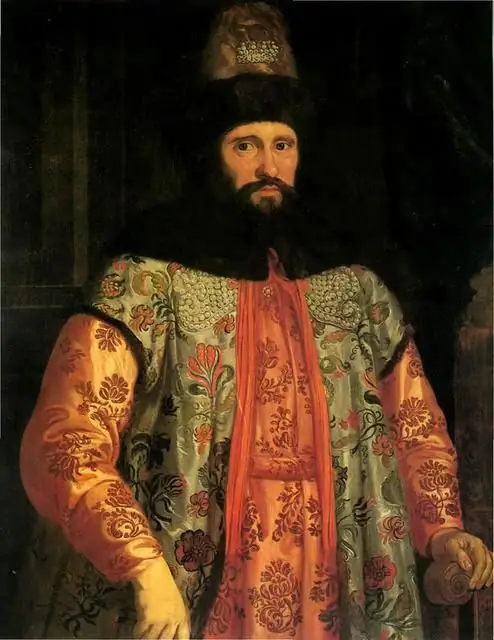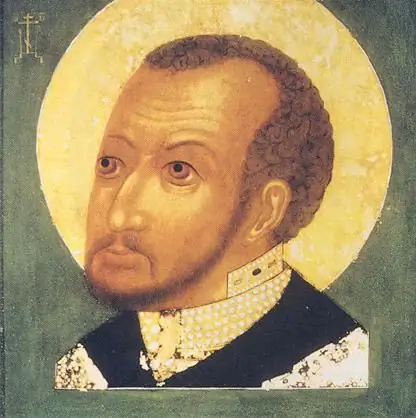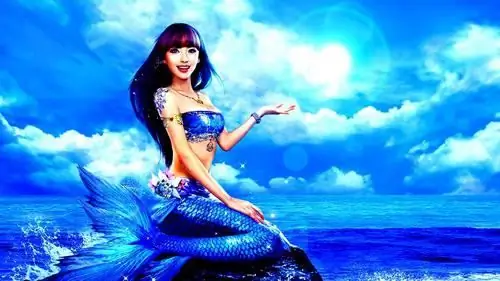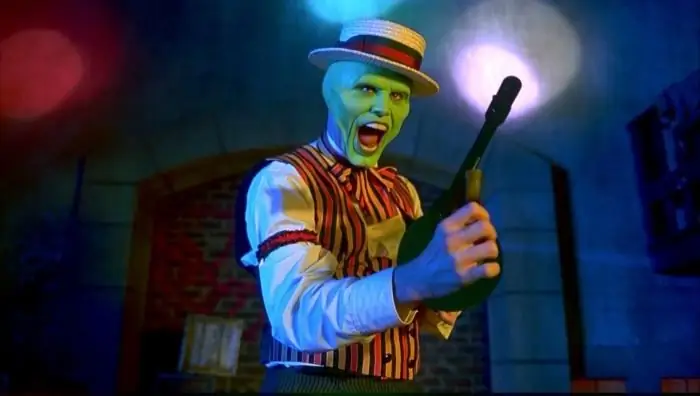2025 Author: Leah Sherlock | [email protected]. Last modified: 2025-01-24 17:46:29
From time immemorial, mankind has tried to capture the world around us, their thoughts and experiences. It took a long time before the rock paintings were transformed into full-fledged paintings. In the Middle Ages, portraiture was expressed mainly in the image of the faces of saints - icon painting. And only from the end of the 16th century did artists begin to create portraits of real people: political, public and cultural figures. This type of art was called "parsuna" (photos of works are presented below). This type of portrait painting has become widespread in Russian, Belarusian and Ukrainian culture.

Parsuna - what is it?
This type of painting got its name from the distorted Latin word persona - "personality". That is how portrait images were called in Europe at that time. Parsuna is a generalized name for the works of Russian, Ukrainian and Belarusian portraiture of the late 16th-17th centuries, which combines iconography with a more realistic interpretation. This is an early and somewhat primitive genre of portraiture, common in the Russian kingdom. Parsuna is the original synonym for the more modern concept of "portrait", regardless of the technique, style and time of writing.
The emergence of the term
In 1851, the publication "Antiquities of the Russian State" was published, containing many illustrations. The fourth section of the book was compiled by I. M. Snegirev, who for the first time tried to generalize all the existing materials on the history of the Russian portrait. It is believed that it was this author who first mentioned what a parsuna is. However, as a scientific term, this word became widespread only in the second half of the 20th century after the publication of Ovchinnikova E. S. “Portrait in Russian Art of the 17th Century”. It was she who emphasized that the parsuna is an early easel portrait painting of the late 16-17th centuries.

Characteristic features of the genre
Parsuna arose during the transitional period of Russian history, when the medieval worldview began to undergo transformations, which led to the emergence of new artistic ideals. It is believed that works in this artistic direction were created by the painters of the Armory - S. F. Ushakov, G. Odolsky, I. A. Bezmin, I. Maksimov, M. I. Choglokov and others. However, these works of art, as a rule, were not signed by their creators, so it is not possible to confirm the authorship of certain works. The date of writing such a portrait was also not indicated anywhere, which makes it difficult to establish the chronological sequence of creation.
Parsuna is a genre of portraiture influenced byWestern European school. The manner and style of writing are conveyed in bright and rather colorful colors, but icon painting traditions are still observed. In general, parsunas are heterogeneous both in material and technological terms and in stylistic terms. However, oil paints are increasingly used to create an image on canvas. Portrait likeness is transmitted very conditionally, often some attributes or a signature are used, thanks to which it is possible to determine who exactly is depicted.

As noted by Lev Lifshitz, Doctor of Arts, the authors of the parsuns did not try to accurately convey the facial features or state of mind of the person being portrayed, they sought to observe clear canons of the stencil presentation of the figure that would correspond to the rank or rank of the model - ambassador, governor, prince, boyar. To better understand what a parsuna is, just look at the portraits of that time.
Types
In order to somehow streamline the examples of portraiture of that era, modern art critics have identified the following categories of parsun, based on personalities and painting techniques:
- tempera on the board, tomb portraits (Fyodor Alekseevich, Fedor Ivanovich, Alexei Mikhailovich);
- images of high-ranking persons: princes, nobles, stewards (Lyutkin, Repnin Gallery, Naryshkin);
- images of church hierarchs (Joachim, Nikon);
- “parsun” icon.

"Picturesque" ("parsing") icon
This type includes images of saints, for which the artist usedoil paints (at least in paint layers). The technique of execution of such icons is as close as possible to classical European. Parsun icons belong to the transitional period of painting. There are two main classical oil painting techniques used to depict the faces of saints at that time:
- drawing on canvas using dark ground;
- work on a wooden base using light primer.
It is worth noting that the parsuna is a far from fully studied genre of Russian portrait painting. And culturologists have to make many more interesting discoveries in this area.
Recommended:
"The Little Mermaid": a summary. "The Little Mermaid" - a fairy tale by G. H. Andersen

The tale of the great Danish storyteller Hans Christian Andersen "The Little Mermaid" has long become world famous and popular, despite its sad ending. She is loved and known in most countries of the world
Byzantine, Georgian and Old Russian ornaments and their meanings. Old Russian ornament, photo

Old Russian ornament is one of the most interesting phenomena in world artistic culture. Throughout time, it has been modified and supplemented. Despite this, the Russian ornament of any age is considered one of the most interesting. In our article you can find more detailed information not only about ancient Russian clipart, but also about the ornaments of other peoples
Films with Oleg Dal: "Sannikov Land", "Old, Old Tale", "The Adventures of Prince Florizel" and others

Such a unique and unusual actor as Oleg Dal has never been in our art, and is unlikely to be. More than 30 years have passed since his death, and disputes about his personality have not subsided to this day. Someone unconditionally classifies him as a genius, someone considers him a capricious star, a quarrelsome and scandalous person. Yes, from the outside it may seem - a madman, well, what did you miss? And this is just an unwillingness to lie, neither to the audience, nor to oneself
Showroom for the soul: comedies old and not so old

A good old comedy is the best option for a relaxed family viewing. But what to choose: a domestic film and one of the works of foreign directors?
Periodization of Old Russian literature. History and features of Old Russian literature

Periodization of Old Russian literature is a phenomenon that was inevitable in the development of the literary side of Russian culture. We will consider this phenomenon in this article, all periods and those prerequisites that marked this periodization

